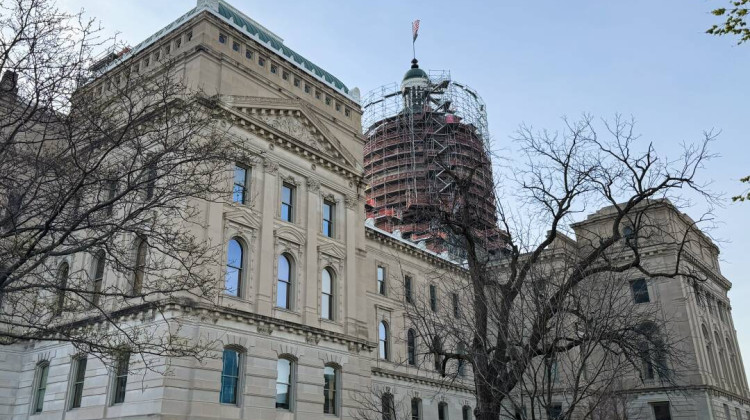Listen to a radio version of this story
Crop losses in Indiana due to drought and excess rain cost taxpayers and farmers more than $3 billion in crop insurance payouts since 1995. That’s according to data from the Environmental Working Group.
The group said the way crop insurance is set up in the U.S. isn’t encouraging farmers to adapt to extreme weather.
Over the past 25 years, Indiana had the 11th highest crop losses of any state. The amount that taxpayers and farmers in Indiana pay into crop insurance is also ten times more than what it was in 1995 — from $19 million to more than $190 million.
Anne Schechinger is the Midwest director for EWG and an agricultural economist. She said drought and excess rain or moisture were the two main reasons why farmers lost crops.
“Since they're so tied to climate change, it's very likely that these costs will just get bigger and bigger in the future as climate change continues to get worse," Schechinger said.
Schechinger said crop insurance has a big financial impact on U.S. taxpayers. On average, taxpayers pay for 60 percent of premiums while farmers pay the rest.
"But we know that when those payments are larger than the premiums that taxpayers and farmers pay paid into the program — then taxpayers are usually also on the hook for a lot of the extra money," Schechinger said. "And taxpayers also pay for these private companies that service these policies. So around a $1 billion a year of taxpayer money also goes to private insurance companies."
Instead of paying farmers for the same type of loss year after year, Schechinger said the federal government should put more money toward conservation programs that help farmers adapt to climate change and prevent these losses.
Join the conversation and sign up for the Indiana Two-Way. Text "Indiana" to 73224. Your comments and questions in response to our weekly text help us find the answers you need on statewide issues.
The Environmental Working Group hopes to see more funding for these programs in the 2023 Farm Bill.
“I think it's a great idea because we've made great strides. We — farmers —have made great strides in the conservation realm," said Bob White, the director of national government relations for the Indiana Farm Bureau.
For example, White said researchers have made a lot of progress in developing drought tolerant corn, soybean, and wheat seeds.
But making cuts to crop insurance could be tricky. The American Farm Bureau Federation said crop insurance is one of the most important risk management tools for farmers and many creditors require it before giving farmers a loan.
Schechinger said many crop insurance programs base payouts on how many acres a farmer has. That means the largest and wealthiest farms often get the most money for their losses.
Contact reporter Rebecca at rthiele@iu.edu or follow her on Twitter at @beckythiele.
Indiana Environmental reporting is supported by the Environmental Resilience Institute, an Indiana University Grand Challenge project developing Indiana-specific projections and informed responses to problems of environmental change.
9(MDAyMzk1MzA4MDE2MjY3OTY1MjM5ZDJjYQ000))
 DONATE
DONATE







 Support WFYI. We can't do it without you.
Support WFYI. We can't do it without you.